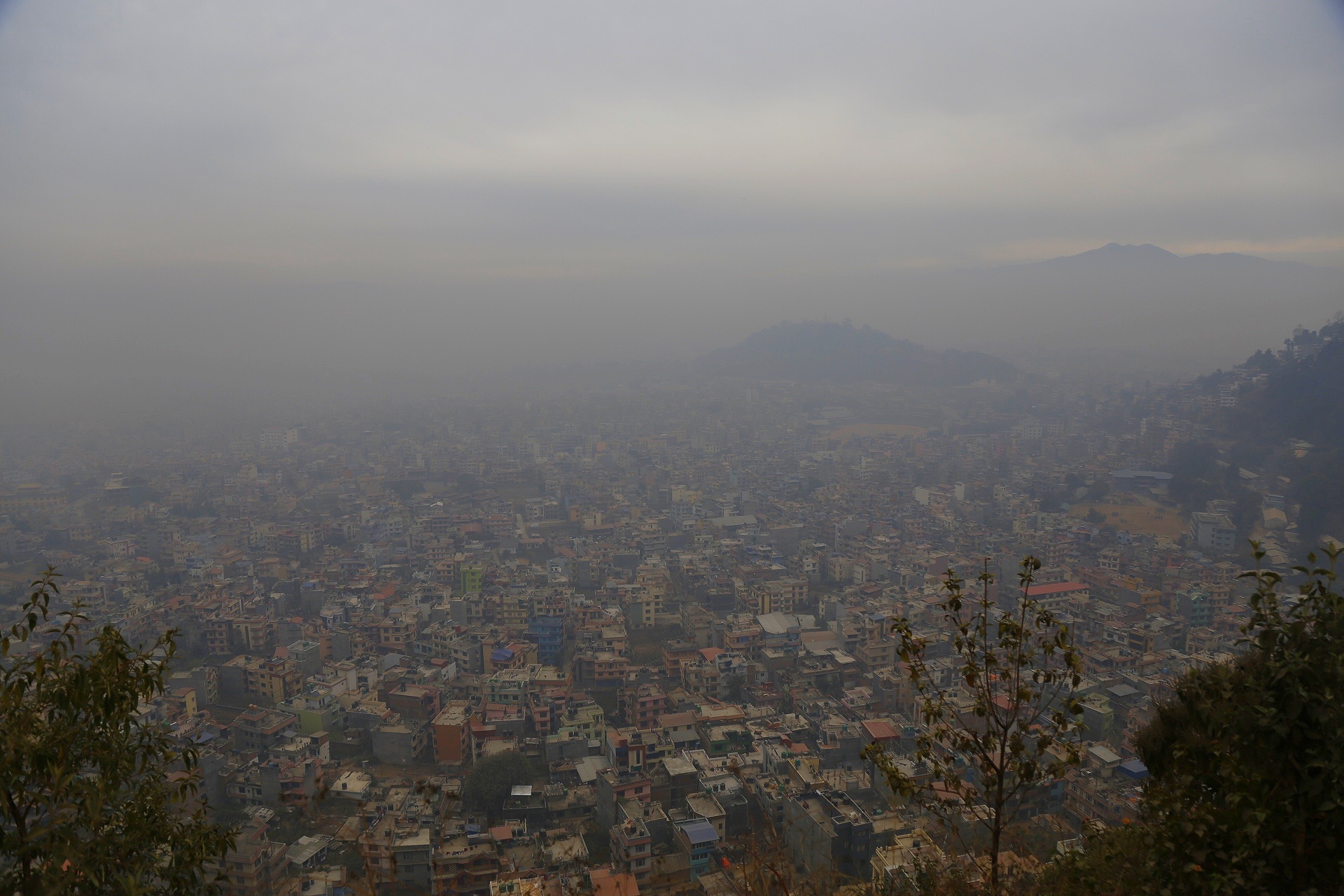Report on Air Quality Action Day and Sustainable Development Goal Implications
1.0 Incident Overview
The Illinois Environmental Protection Agency (EPA) has issued a Red Forecast Air Pollution Action Day for the Rockford region and other areas of northern Illinois, with a statewide alert in effect. This report analyzes the event through the lens of the United Nations Sustainable Development Goals (SDGs).
- Event: Red Forecast Air Pollution Action Day.
- Cause: Transboundary air pollution from Canadian wildfire smoke.
- Affected Areas: Rockford region, northern Illinois, and other Midwest states including Wisconsin.
- Classification: Air quality is designated as “unhealthy” according to the Air Quality Index (AQI).
2.0 Impact on SDG 3: Good Health and Well-being
The primary impact of this environmental event relates to SDG 3, which aims to ensure healthy lives and promote well-being for all at all ages. The unhealthy air quality poses a direct risk to public health, undermining Target 3.9, which seeks to reduce illnesses from air pollution.
2.1 Vulnerable Populations
Specific demographic groups are identified as being at higher risk, a key consideration for ensuring equitable health outcomes.
- Children
- Older adults
- Individuals with pre-existing pulmonary or respiratory diseases, such as asthma
2.2 Public Health Directives
In response to the health threat, authorities have issued official recommendations to mitigate exposure and protect community well-being.
- Avoid prolonged or strenuous outdoor activities.
- Choose less strenuous activities to reduce respiration rate.
- Shorten the duration of time spent outdoors.
- Relocate physical activities indoors or reschedule them for a time with better air quality.
3.0 Relevance to SDG 11: Sustainable Cities and Communities
This event highlights challenges to SDG 11, particularly Target 11.6, which focuses on reducing the adverse environmental impact of cities by improving air quality. The Air Pollution Action Day serves as a critical indicator of urban environmental health.
- Monitoring Systems: The Air Quality Index (AQI), utilized by agencies like AirNow and the Illinois EPA, is a vital tool for monitoring urban air quality.
- AQI Framework: The index is a color-coded system that classifies air quality from “Good” (Green) to “Hazardous” (Maroon), enabling clear public communication.
- Action Trigger: An Air Pollution Action Day is declared when the AQI is forecasted to reach the “Unhealthy” (Red) category or worse.
4.0 Linkages to SDG 13: Climate Action and SDG 15: Life on Land
The root cause of the air pollution event, widespread wildfires, is intrinsically linked to broader global environmental goals. This underscores the interconnectedness of the SDGs.
- SDG 13 (Climate Action): Increasing frequency and intensity of wildfires are recognized consequences of climate change. This incident demonstrates the tangible, cross-border impacts of climate-related events on human populations.
- SDG 15 (Life on Land): The wildfires causing the pollution represent a significant threat to terrestrial ecosystems, biodiversity, and forest health, directly impacting the targets of SDG 15.
SDGs Addressed in the Article
SDG 3: Good Health and Well-being
- The article directly addresses public health by issuing an “unhealthy air quality alert.” It highlights the health risks associated with air pollution, especially for vulnerable populations such as “Children, older adults and those with pulmonary or respiratory diseases like asthma.” It provides specific health-protective recommendations, like avoiding strenuous outdoor activities, which connects directly to ensuring healthy lives.
SDG 11: Sustainable Cities and Communities
- The article focuses on the environmental conditions within a specific urban and regional area, the “Rockford region and other areas of northern Illinois.” The issuance of an “Air Pollution Action Day” is a direct response to the adverse environmental impact of air pollution on the city and its inhabitants, aligning with the goal of making cities and human settlements safe and sustainable.
SDG 13: Climate Action
- The article identifies the source of the pollution as “Canadian wildfire smoke.” Large-scale wildfires are recognized as a climate-related hazard. The article describes a response mechanism, the “Air Pollution Action Day,” which functions as an early warning system to help the population adapt to the hazardous conditions. This relates to strengthening resilience and adaptive capacity to climate-related disasters.
SDG 15: Life on Land
- The root cause of the air quality issue is identified as “Canadian wildfire smoke.” Wildfires represent a significant threat to forests and terrestrial ecosystems, leading to deforestation and land degradation. The event described in the article is a direct consequence of a failure to protect or sustainably manage forest ecosystems.
Specific SDG Targets Identified
SDG 3: Good Health and Well-being
- Target 3.9: By 2030, substantially reduce the number of deaths and illnesses from hazardous chemicals and air, water and soil pollution and contamination.
- The article’s entire focus is on an “unhealthy air quality alert” due to pollution (wildfire smoke). It explicitly warns of health risks and advises actions to prevent illness, particularly for those with “pulmonary or respiratory diseases,” directly addressing the reduction of illnesses from air pollution.
SDG 11: Sustainable Cities and Communities
- Target 11.6: By 2030, reduce the adverse per capita environmental impact of cities, including by paying special attention to air quality and municipal and other waste management.
- The article is centered on managing poor air quality in the “Rockford region.” The Illinois Environmental Protection Agency’s declaration of an “Air Pollution Action Day” is a measure specifically designed to address the adverse environmental impact of air quality on the city’s population.
SDG 13: Climate Action
- Target 13.1: Strengthen resilience and adaptive capacity to climate-related hazards and natural disasters in all countries.
- The article describes a system (“Air Pollution Action Day”) that acts as an early warning for a climate-related hazard (wildfire smoke). This system, along with the public advisories on how to respond, demonstrates an effort to build resilience and adaptive capacity to the impacts of such events.
SDG 15: Life on Land
- Target 15.2: By 2020, promote the implementation of sustainable management of all types of forests, halt deforestation, restore degraded forests and substantially increase afforestation and reforestation globally.
- The article identifies “Canadian wildfire smoke” as the problem’s source. This implies a large-scale loss of forest land, which runs counter to the goal of sustainable forest management and halting deforestation. The event is a symptom of challenges related to this target.
Indicators for Measuring Progress
Indicators for SDG 3 and SDG 11
- Indicator: The Air Quality Index (AQI).
- The article explicitly mentions the AQI as the tool used to measure air pollution and trigger action. It states, “action days are declared when the Air Quality Index gets into the unhealthy ranges.” It further explains that the Illinois EPA declares an action day when air quality is “at or above the red or ‘unhealthy’ category on the AQI.” The AQI serves as a direct, quantifiable indicator for Target 11.6 (related to Indicator 11.6.2: Annual mean levels of fine particulate matter) and Target 3.9 (related to Indicator 3.9.1: Mortality rate attributed to… air pollution).
Indicator for SDG 13
- Indicator: The existence and implementation of an early warning system.
- The article describes the “Red Forecast Air Pollution Action Day” system issued by the Illinois Environmental Protection Agency. This system, which provides timely warnings and guidance to the public, is an implicit indicator of a country’s or region’s adoption of strategies for climate change adaptation and disaster risk reduction, relevant to Target 13.1.
Indicator for SDG 15
- Indicator: The occurrence and impact of large-scale wildfires.
- The article’s reference to “Canadian wildfire smoke” lingering over Illinois implies a significant wildfire event. The existence and scale of such fires serve as an indirect indicator of challenges in achieving sustainable forest management and preventing land degradation, as outlined in Target 15.2.
Summary of Findings
| SDGs | Targets | Indicators |
|---|---|---|
| SDG 3: Good Health and Well-being | Target 3.9: Substantially reduce deaths and illnesses from air pollution. | The level of the Air Quality Index (AQI), specifically when it reaches the “red or ‘unhealthy’ category,” indicating a high risk of illness. |
| SDG 11: Sustainable Cities and Communities | Target 11.6: Reduce the adverse per capita environmental impact of cities, paying special attention to air quality. | The Air Quality Index (AQI) used by AirNow and the Illinois EPA to monitor and classify air quality in the Rockford region. |
| SDG 13: Climate Action | Target 13.1: Strengthen resilience and adaptive capacity to climate-related hazards. | The implementation of the “Air Pollution Action Day” as an early warning system to protect the public from a climate-related hazard (wildfire smoke). |
| SDG 15: Life on Land | Target 15.2: Promote sustainable management of all types of forests and halt deforestation. | The presence of “Canadian wildfire smoke” in Illinois, which implies a large-scale wildfire event and challenges in sustainable forest management. |
Source: wifr.com







